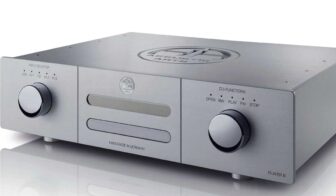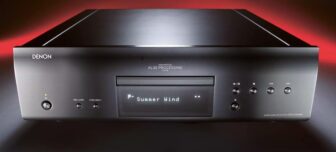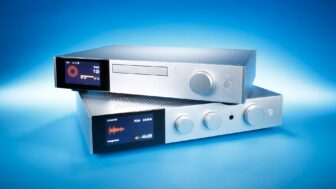Pier Audio CD 880 SE Review
Two hearts beat within the CD-880 SE from Pier Audio. In addition to transistors, you get an official tube output stage. How should it sound? The choice is yours!
By Christian Möller
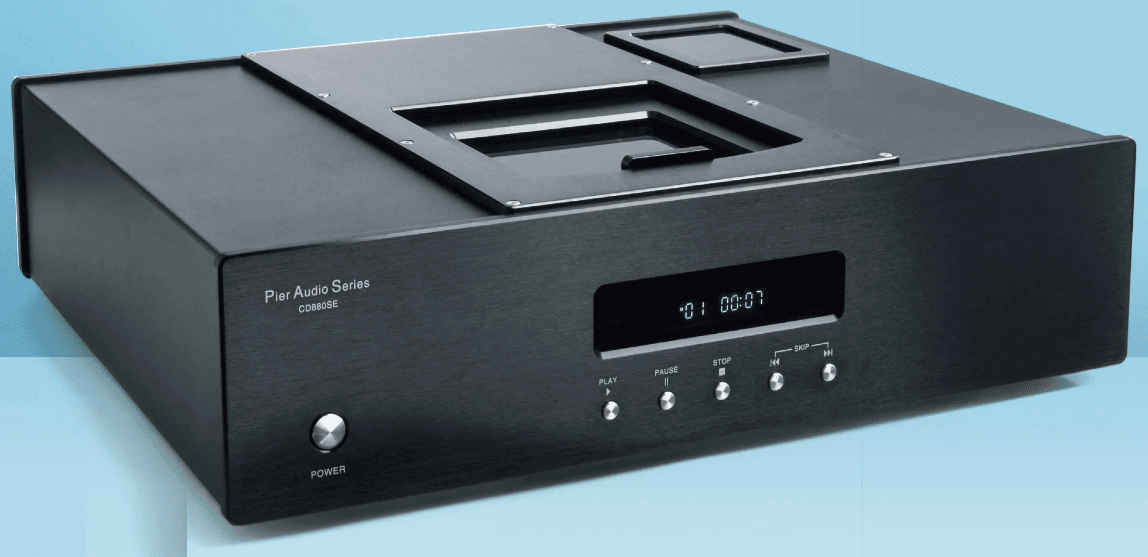
Tubes or transistors? The question is much more than technologically motivated; it is a way of life, a deep philosophy. Each technology has its own characteristic sound features; tubes are said to sound warm and soft. And that’s true because they produce harmonic distortions that can be perceived as pleasant and musical. They give music a certain fullness and timbre. Tubes tend to generate harmonic overtones that convey a certain liveliness and naturalness to the sound. This can be particularly noticeable with musical instruments and voices. Additionally, tube amplifiers have a gently compressing effect that can balance loud and soft passages in music. In some cases, this leads to particularly dynamic music and impulses being perceived as less harsh. This can be appealing.
It’s different with transistors, which come across as clear and precise. They generally produce fewer harmonic distortions, tending to reproduce the original sound of the audio signal more accurately. Transistors are also more technologically advanced and operate more powerfully and efficiently.
Those who like both fortunately don’t have to make a final decision when purchasing the CD-880 SE, because you actually get both. The device offers extensive features, including a tube output stage that follows the D/A converter.
PLEASE LOAD FROM THE TOP
The Pier Audio CD-880 SE is a top-loader, which is quite rare. However, this model convinces due to its excellent and high-quality workmanship and especially because of its fast operation. Compared to slower drawer players like the Technics SL-G700M2, you don’t have to wait for the disc to be ejected automatically. You can simply press stop and open the lid. You can even insert a CD when the device is not yet switched on. There is also no delicate mechanical locking of the CD in the drive; instead, there is a magnetic puck that is placed on the inserted CD. It holds it securely on the spindle motor. Yes, theoretically you could lose this puck, but since it is magnetic, it sticks anywhere on the steel housing surface of the device. Even during transport, when you shouldn’t leave the puck in the drive, it doesn’t get lost so easily—a clever thing.
ROBUST CD MECHANISM
Pier Audio places special emphasis on the internal drive. It operates with an official optical pickup mechanism from the manufacturer Sanyo, which is specialized in the pure playback of audio CDs according to the Red Book standard. So unfortunately, there is no playback of SACDs or Blu-ray Audio. However, the advantage is that the Red Book drive doesn’t have to withstand high rotational speeds. It operates at a constant linear velocity, so it varies its rotational speed depending on the position of the pickup. In the inner areas, where the music data of an album begins (unlike vinyl records), it spins faster; towards the outside, it becomes progressively slower. This ensures a constant data rate of about 1500 kbit/s. Mechanical noises during pickup remain virtually inaudible. This was also noticeable in the test. The CD-880 SE remained whisper-quiet in operation at all times. Only during direct jumps between titles further apart on a CD was a slight chirping perceptible.
VINTAGE CONVERTER CHIP
Inside is the CS 4392 converter chip from Cirrus Logic, which doesn’t perform upsampling, as the dealer informed us. Cirrus Logic themselves no longer recommend the chip for new designs, although this is probably more about DACs in the streaming sector. The converter theoretically processes signals up to 192 kHz in 24-bit. In the CD-880 SE, however, it is limited to the format required for Red Book audio CDs: 44.1 kHz in 16-bit.
ROBUST CD MECHANISM
On the back of the device, there is a digital output in the familiar coaxial format and two pairs of analog output sockets. At first, this is unusual, but considering the additional tube output stage, the two analog outputs are a clever idea. One pair of outputs delivers the signals from the transistor output stage, the second pair—simultaneously—the signals from the tube output stage. This allows you to route both signals simultaneously to different inputs of a connected amplifier and decide through A/B comparisons which output stage is better suited for the inserted CD. Sure, Pier Audio could have provided a switch directly in the device, but this would have required additional components and more complex signal routing in the analog circuitry of the device, which could have possibly harmed the sound.
Those who prefer even more extreme configurations could connect a separate amp and speaker pair for each output. At the tube output, for example, a tube amp with high-efficiency speakers would be recommended, while at the transistor output, you might operate a powerful pre-power combo or a Class-D amp with party-ready speakers. The possibilities are diverse.
THE DUAL TRIODE
A few more words about the tube that Pier Audio has provided in the CD-880 SE. It is a 12AU7, which is fundamentally identical to the widespread ECC82 but optimized for use in high-quality audio applications. The dual triode processes both stereo channels simultaneously and is known for its high amplification capability, which makes it particularly useful in audio circuits where significant signal amplification is required. At the same time, it is famous for generating less self-noise than many other tube types, leading to clear and precise sound reproduction.
The 12AU7 has nine pins and is usually used with a B9A socket base, which facilitates its installation in various devices. Its robust construction and long lifespan make it a reliable component in audio technology applications. However, tubes don’t live forever. Pier Audio unfortunately does not provide for the user to easily replace the tube themselves in the CD-880 SE. However, experienced hobbyists can open the device to replace the tube themselves, if necessary.
The Pier Audio CD-880 SE comes with an aluminum remote control. It feels good in the hand but is not particularly clearly designed and relatively small. We found it irritating that the labeling is above the buttons. That can lead you to press the wrong button.
THE DISPLAY
On the front side, there is a display that shows essential information about the current operating status of the player. It offers a good readable contrast but is not large. Therefore, it is hard to read from a distance. But it does its job. Using the “Display” button on the remote control, you can switch between elapsed time and remaining time for the current track or the entire CD. Unfortunately, the drive doesn’t read CD Text, so you have to do without title and album information on the display.
CD-880 SE IN THE LISTENING TEST
First, we listened to the CD-880 SE with our reference system from T+A and B&W at the transistor output. As expected, it delivered a clean sound image without distortions or inaccuracies. Its timing was perfect; impulses came crisp and shot out of nowhere.
Progressive metal is especially fun here. We listened to the excellently produced live recording “An Evening Of Innocence & Danger” by the Neal Morse Band. The CD-880 SE effortlessly reproduced Mike Portnoy’s escapades on the drums with excellent precision. That was enormous. The player also especially likes rock and pop at the transistor output. The jazz-pop combo Dirty Loops put on a powerful performance with the song “Circus”. The extraordinary voice of singer Jonah Nilsson remained always exactly positioned in the room and rendered crystal clear. Nothing was concealed or glossed over here.
Now to the tube output stage: In terms of sound, the CD-880 SE also delivered fundamentally excellent results in all genres here, but it was virtually craving for classical fare. It should get that. The 2021 album “Echoes of Life” by exceptional pianist Alice Sara Ott was just right here. Her soulful keystrokes, the dynamics, the timbre of her grand piano—all that came alive, blossomed, and poured into the listener’s ears like the clear meltwater of a mountain stream. Nothing was harsh or hard. World-class!
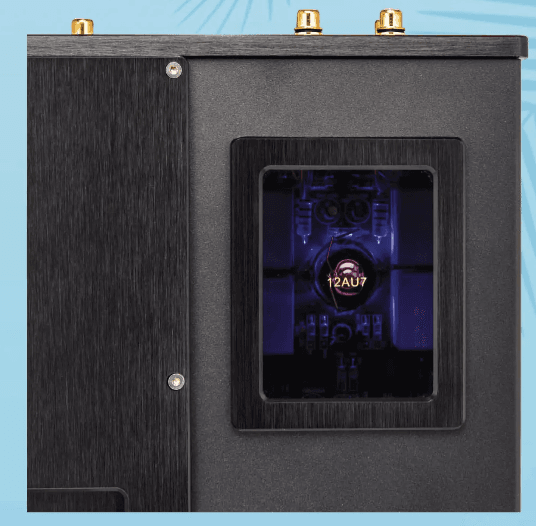
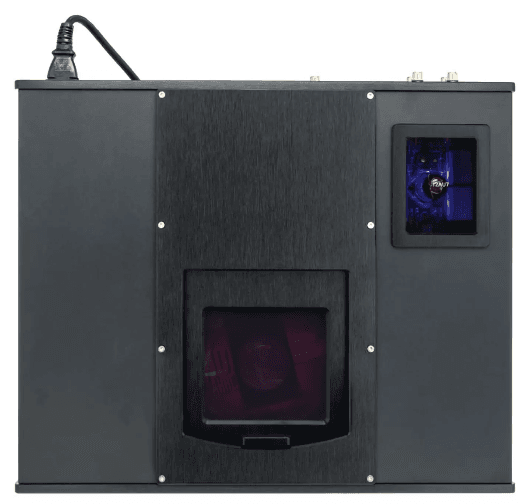
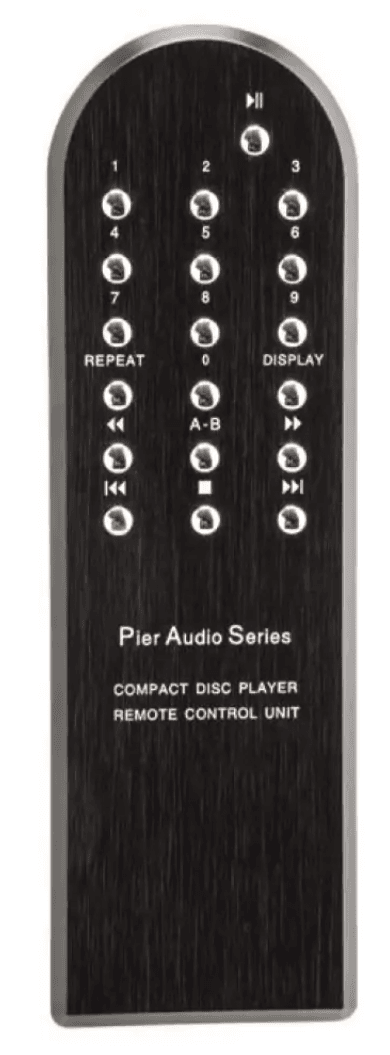
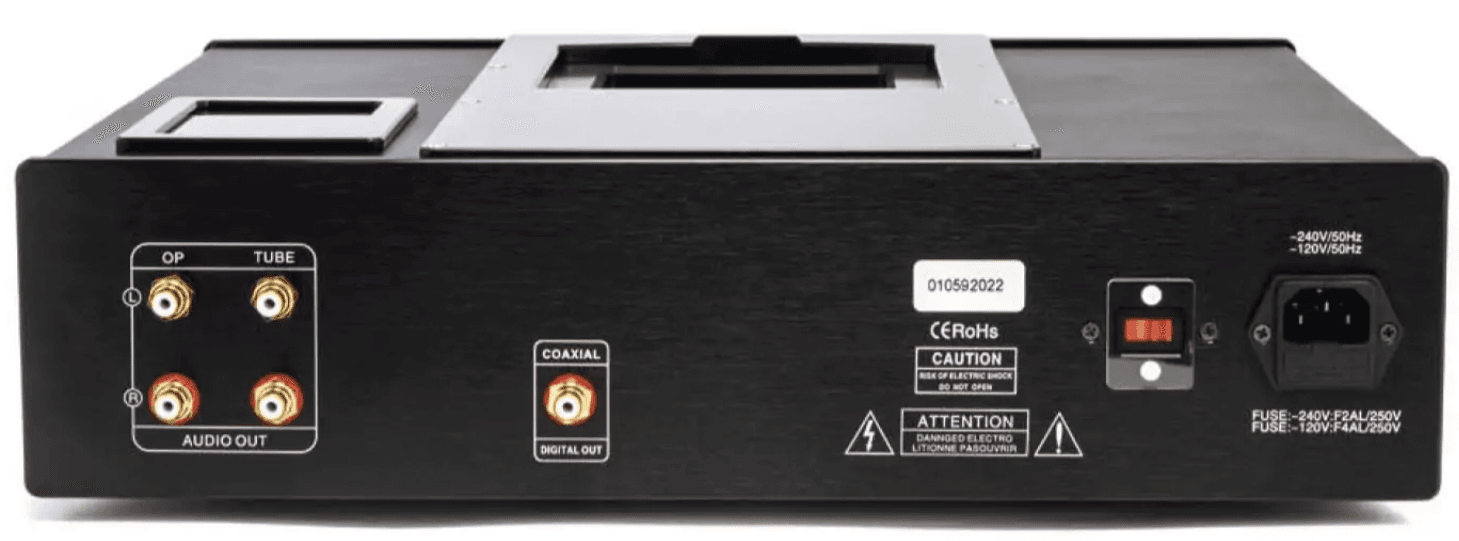
MEASUREMENT LAB
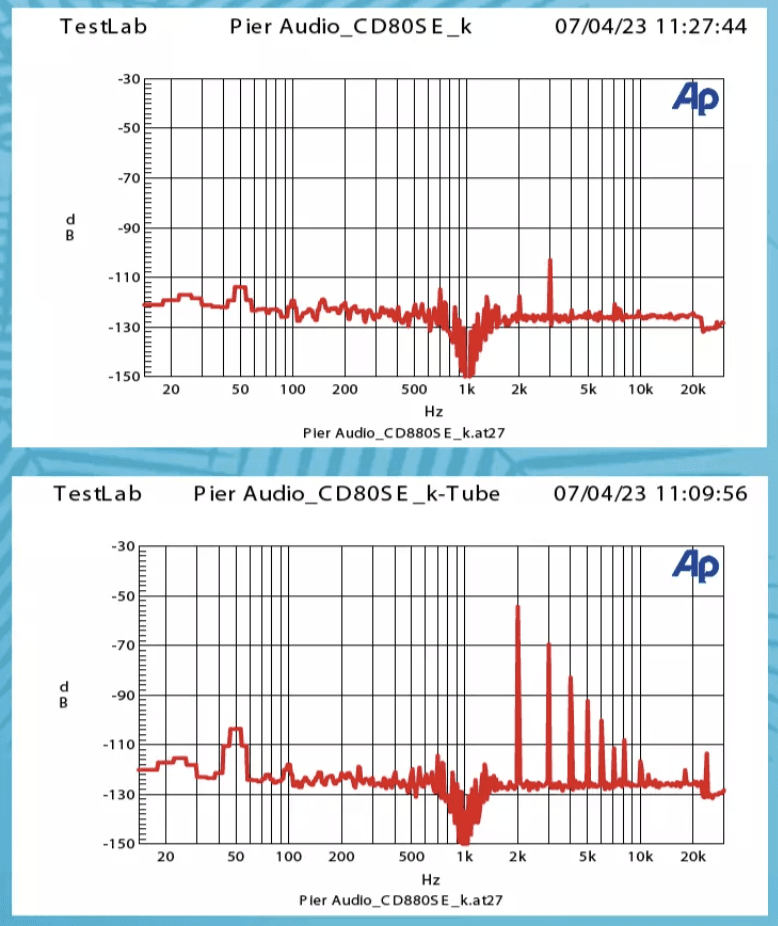
The two diagrams show the audio spectrum when playing back a 1 kHz tone (filtered out) at full digital level 0 dBFS, at the transistor output (top) and at the tube output (bottom). Extremely clean distortion profile in transistor mode with low noise floor, hardly any mains hum (50 Hz multiples), and minimal k3 residue (peak at 3 kHz, –100 dB). In tube mode, slightly more 50 Hz hum and visible distortion harmonics with a nicely declining gradation from k2 to k8. Frequency response: completely linear in both modes, cleanly working pre-emphasis decoder with negligible frequency response deviation of –0.8 dB at 5 kHz. Distortions (1 kHz, 0 dBFS): 0.06% THD+N (Solid State)/0.18% THD+N (Tube). Output voltage (1 kHz, 0 dBFS): not adjustable, 2.1 V (Solid State)/1.9 V (Tube). Output impedance: 220 Ω (Solid State)/460 Ω (Tube). Idle noise (A-weighted): 105 dB (Digital Zero)/97 dB (with low residual signal) – identical in Solid State and Tube mode. Power consumption: 0/18 W (Off/CD playback).
Specifications:
- Price (MSRP): 1,800 Euros (~$1,960 USD)
- Warranty: 2 years
- Dimensions (W x H x D): 41 x 11 x 34 cm
- Weight: 11 kg
Features:
- Random Track Selection: No
- Play Time Display (Track/CD/Program): Track and CD
- Remaining Time Display (Track/CD/Program): Track and CD
- Repeat (CD/Track/A–B): All options available
- Remote Control: Yes
- Output (Variable/Fixed): Fixed
- Output (Cinch/XLR): Cinch only
- Digital Output (Cinch/Optical): Cinch only
- Headphone Output (Adjustable): No
- Digital Input (Cinch/Optical/USB): None
- USB-Host/iPod: Not available
- Special Features: Tube preamp stage
CONCLUSION
The focus of this CD machine is clear: purest sound from two hearts. The possibilities arising from the two analog outputs are unparalleled. The drive itself made an almost indestructible impression in the test. This player is built for eternity and should bring its owner joy for years, if not decades. It becomes even more astonishing when you look at the price. The CD-880 SE plays at least a class higher. A clear sound recommendation!
Audiogram:
Pros:
- Sonic excellence at the highest level, massive build quality
Cons:
- No CD-Text support
Sound: 118
Evaluation:
- Sound: 118 points → 9.3/10
- Features: Very Good → 9/10
- Usability: Very Good → 9/10
- Build Quality: Outstanding → 10/10
Final Score:
- Sound Rating: 118 points → 9.3/10
- Price/Performance: Outstanding




